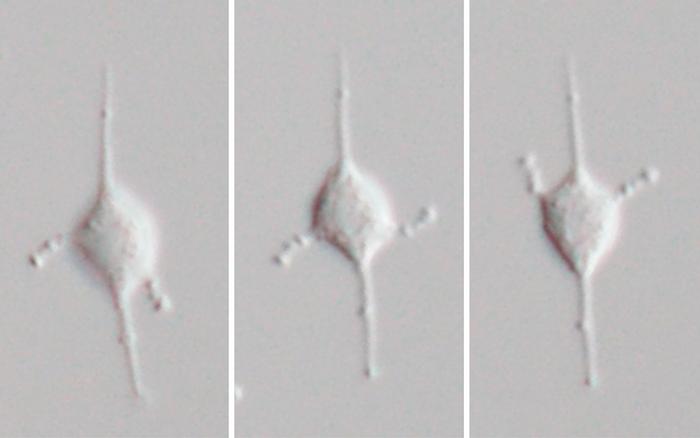Tsukuba, Japan—Meteora sporadica is a small, unicellular eukaryote (protist) that was discovered in deep Mediterranean sea sediments in 2002. It differs from known protists by the presence of two lateral arms that swing back and forth. However, the ultrastructure and phylogenetic position of M. sporadica remain unknown.

Credit: University of Tsukuba
Tsukuba, Japan—Meteora sporadica is a small, unicellular eukaryote (protist) that was discovered in deep Mediterranean sea sediments in 2002. It differs from known protists by the presence of two lateral arms that swing back and forth. However, the ultrastructure and phylogenetic position of M. sporadica remain unknown.
In this study, researchers successfully cultured and analyzed two strains of M. sporadica from marine sediments in detail. Ultratructural observations revealed that M. sporadica has a complex cytoskeleton, with lateral arms that are supported by microtubules extending from multiple microtubule-organizing centers (MTOCs) located in the center of the cell. A large-scale molecular phylogenetic analysis using amino acid sequences of 254 genes revealed that M. sporadica is not associated with any of the major eukaryotic lineages (supergroups) identified to date, but is closely related to Hemimastigophora, a group of protists considered to be one of the most deep-branching eukaryotes.
Interestingly, Hemimastigophora is composed of large protists with numerous flagella and no arms or MTOCs. This study demonstrates that Meteora and Hemimastigophora represent a morphological diversity that is comparable to other supergroups. Identifying and analyzing poorly-studied protists, such as M. sporadica, is essential for elucidating the phylogeny and diversity of eukaryotes.
###
This study was supported by the Japan Society for the Promotion of Science (JSPS) KAKENHI Grant Numbers: 13J00587, 18J02091, by NSERC discovery grant 298366-2019 (to AGBS), and NSERC Discovery grant RGPIN-2022-05430 (to AJR).
Original Paper
Title of original paper:
Meteora sporadica, a protist with incredible cell architecture, is related to Hemimastigophora
Journal:
Current Biology
DOI:
10.1016/j.cub.2023.12.032
Correspondence
Assistant Professor SHIRATORI, Takashi
Institute of Life and Environmental Sciences, University of Tsukuba
Related Link
Institute of Life and Environmental Sciences
Journal
Current Biology
DOI
10.1016/j.cub.2023.12.032
Article Title
Meteora sporadica, a protist with incredible cell architecture, is related to Hemimastigophora
Article Publication Date
22-Jan-2024




